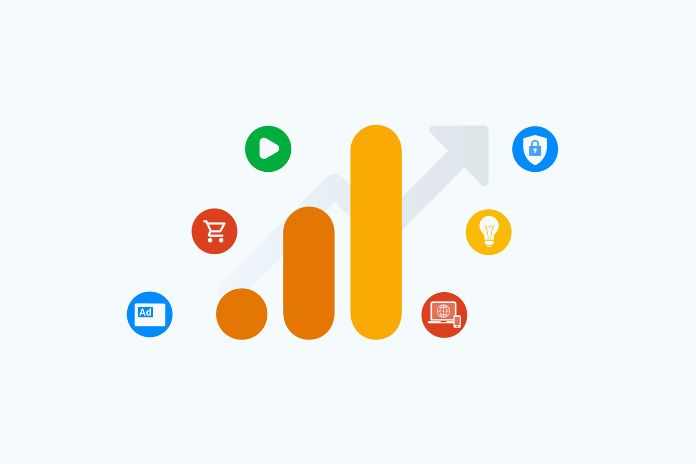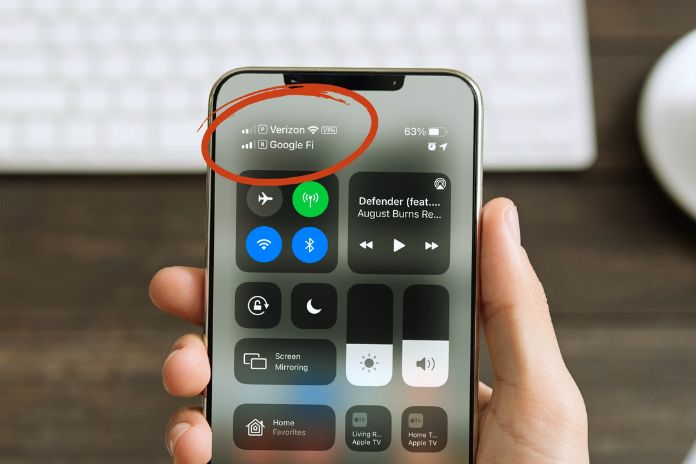To implement professional web projects, you have to measure success. Only with good analysis can you uncover weak points, identify potential and carry out optimizations. Google Analytics has established itself as the standard for this – also for WordPress websites. Especially if you create WordPress websites on behalf of third parties, you need a sound data basis to justify decisions.
How Do Large And Medium-Sized Projects Benefit From Google Analytics?
Every project has its challenges. To meet these well-founded – and not just from a gut feeling – you need data. Google Analytics is the right tool to collect and evaluate this information. It’s not just about seeing the raw traffic but also about getting to know the users better. This way, the presented web offer can be better tailored to the target group, and the website’s success can increase.
Google Analytics is particularly well suited because the tool provides excellent-grained information. These also help better to understand the stay of visitors on the website. How do users move through the individual pages? Which elements do visitors interact with the most? Is the site more likely to be accessed from mobile or desktop?
ALSO READ: How To Plan Target-Oriented Email Marketing Campaigns
Working with Google Analytics brings the following advantages :
- monitor traffic
- Optimize keywords
- Improve page structure
- revise technique
- recognize target group
- Check campaigns
Thanks to the ease of use of WordPress, changes can be implemented very quickly. Some tasks can even be handed over to customers directly. The backend of the most popular CMS is so simple that even lay people can create and edit content.
Opportunities For Optimization Thanks To The Analysis
Google Analytics is a very comprehensive tool for monitoring a web project. In principle, every website – large or small – can benefit from the findings. But not every key figure is attractive for every project.
One Pager
So-called one-pagers – i.e., websites with only one HTML page – are very well suited to running small campaigns or conveying information quickly. However, Google Analytics has a problem with this website structure: Normally, the tool can track visitors’ movement based on clicks on links and the loading of new pages. Other ways must be found for a website that only consists of a single page.
So you can also use a one-pager navigation with links that lead to the different sections as jump marks. A click on the link expands the URL with specific parameters, which Google Analytics can register. In addition, classic information such as the bounce rate is also very interesting for operators of a one-page website: You can quickly see whether visitors are satisfied with the offer or leave directly disappointed. So keep a close eye on whether visitors are happy with the content and, if necessary, improve it at short notice.
Magazine
Whether it is an independent magazine or a company blog, Google Analytics helps optimize the web project. Above all, information about the target group helps deliver the right content. See precisely the successful published content and how readers are brought to the site.
The Google tool is precious for the latter. In the analyses, you can see exactly which keywords were entered in the search engine to get to your articles. This can be valuable search engine optimization(SEO) information for new content. For independent magazines that depend on advertising revenue, the findings from the analysis tool can be interesting for other reasons: data helps to find the right advertisers and to convince them of your offer.
Corporate Appearance
A website with several subpages, such as a typical company website, is one of the standard cases of web design. In the best-case scenario, visitors to the website click from one subpage to the next. Google Analytics can show these movements well as a user journey. This way, you can see which connections are working well and which parts of the website are dead ends.
The knowledge gained can then be implemented to optimize lead generation. Guide visitors through the website in such an intelligent way that they end up storing their contact details, for example.
Ecommerce
Online shops are complex web projects that pursue a simple goal: to generate revenue through sales. To achieve this as effectively as possible, data from Google Analytics can help you. The conversion rate is critical in this context. So the Google tool can tell you how many visitors complete a transaction, making it a cornerstone of conversion optimization. With the data from Google Analytics, you can also understand at which point users cancel the purchase or which website entries and paths through the website work very well.
In addition to the analysis data, which is also helpful for other web projects, Google Analytics can provide information specific to e-commerce. The tool offers you data on the sales generated and can even include shipping costs and taxes. This is how you link the website’s tracking with sales data and draw interesting conclusions from it.
Use It Correctly: 4 Tips For Google Analytics.
The findings must be used correctly for the collected data to lead to a successful improvement. The following tips will show you how to ensure your efforts don’t fizzle.
Set Smart Goals
As the creator or operator of a website, you are responsible (possibly in cooperation with stakeholders) for defining goals yourself. It is not helpful for anyone to aim for an unclear “as good as possible.” This leads either to frustration among those involved or to a project that hardly progresses. To set meaningful goals, selecting the correct vital figures is first essential.
- User numbers: The easiest way to measure the success of a web project is via the number of hits on a website. The more people visit the site – so the thought goes – the more successful the project will be. From the perspective of the web designer, this is initially correct. For the client company, such success is only the first step.
- User behavior: It is beneficial if visitors spend as much time as possible on the website. This reduces the bounce rate – i.e., the bounce rate – and shows you that you are providing interesting content. If, on the other hand, visitors leave the page immediately or only spend a few seconds there, this is an indicator that you need to do more work on the design and content.
- Conversions: Companies usually want to generate profit from their investments. Leads – for example, contact data collection – have a high value for this. In Google Analytics, you can count a piece of information gained, for example, by tracking the URL of the thank you page displayed to visitors after registering for the newsletter. But sales can also be tracked in this way.
You can define the goals directly in Google Analytics and see how your web project is performing at a glance. The feature can be found in the administration area of the platform.
Interpret Key Figures Correctly
Many webmasters tend to collect a lot of data but do not evaluate it properly. First of all, the distinction between page view, session, and user must be understood:
- Page view describes every page view – whether the visitor is landing on your website for the first time or clicking from subpage to subpage.
- Session: The page views of a single visitor are combined into a session. So if you click on the About page from the home page, it’s a new page view, but within the same session.
- User: Each user can, in turn, conduct several sessions over time.
Google Analytics also shows you how visitors come to your website. For example, if you hardly have access to search engines, you should improve your content in search engine optimization. If you have placed ads via Google Ads but, as a result, hardly get any visitors to the website, you can turn this screw. It would help if you also got visitors from other websites (e.g., blogs or forums). If not, you need to put more effort into building backlinks. Finally, it would help if you also looked closely at the demographic details that Google Analytics provides. For example, you can see where your visitors are coming from. The so-called affinity categories even show you what general interests your visitors have. This helps to make the content of the website more target group-oriented.
present Results
The amount of data provided by Google Analytics can be overwhelming – especially if you’re not directly involved. If you work on behalf of a client, you may have to present successes to them regularly. Information provided by the analysis tool is ideally suited for this. But you have to be shown correctly. It is of little help to outsiders if you work with absolute numbers. The values are only meaningful in context. Therefore, always present a chronological progression. This can be represented visually in graphs.
If you have relevant data from competitor sites (some of which you can collect using other tools), you can easily compare your performance with the competition. So, work with examples. It doesn’t help anyone if you present too much – and above all, too much general – data. Find content that has performed exceptionally well and derive benchmarks from that. So, don’t be afraid to point out failures. In the best case, you will then also present a strategy to better master this challenge in the future.
Note Data Protection
By using Google Analytics, you collect user data. In any case, make sure that you behave by data protection regulations. Especially with the introduction of theGeneral Data Protection Regulation (GDPR), you have to pay more attention to the protection of users when using the Google tool. There are various measures for this:
- Data protection declaration: In the web document, which is necessary anyway, you make it clear which information you analyze and for what purpose you do this.
- Order processing contract: The data of your visitors are stored and processed by Google. Google is an external service provider that collects user information on your behalf. This relationship should be contractually defined.
- IP anonymization: Set Google Analytics so that no data is collected that can be used to identify a specific person.
- Opt-out/opt-in: Give users the option to opt-out of being tracked by Google Analytics right at the beginning of their visit to the website – or even better, leave tracking switched off by default unless visitors agree to the analysis.
Helpful Tools Presented
Google Examination alone is, as of now, a convenient device. You can see the primary data through the web application. You can, in any case, consolidate the examination device with different arrangements. This improves dealing with or gets considerably more out of the site examination.
Google Label Supervisor
Utilize the Google Label Administrator, so you don’t need to physically enter the site label on each HTML page. Different following marks can be overseen utilizing this Google apparatus.
Google Examination Module
Google fostered the Site Unit for WordPress. This assists you with interfacing different Google administrations to your WordPress project. Moreover, the modules” GA Google Investigation” and “MonsterInsights” are additionally suggested.
WordPress Search engine optimization: To carry out the essential data from Google Investigation, you ought to manage Website design enhancement modules for your site. These assist you, for instance, to all the more likely advanced substances for web search tools.
Google Information Studio
This Google device assists you with handling the information gathered. The Information Studio can give you essential administration, particularly assuming that you need to make reports for clients.
Conclusion
Google Analytics offers a lot of important information for website operators and especially for web design professionals. With the tool, you can effectively improve the performance of the web project and, at the same time, provide your customers with attractive, vital figures. But the Google tool is not the only way to conduct website analytics. Some Google Analytics alternatives score points when it comes to data protection.









